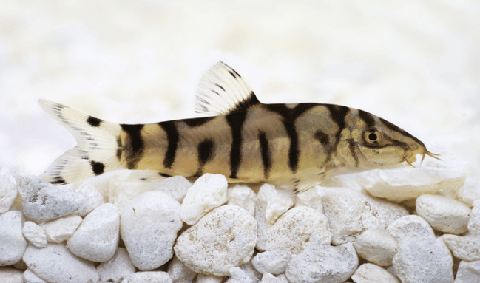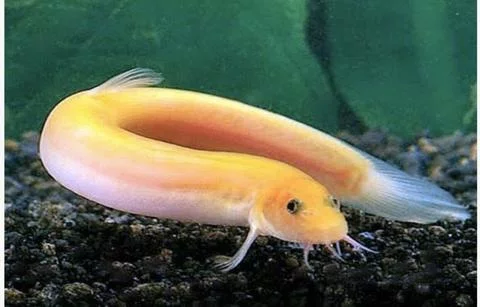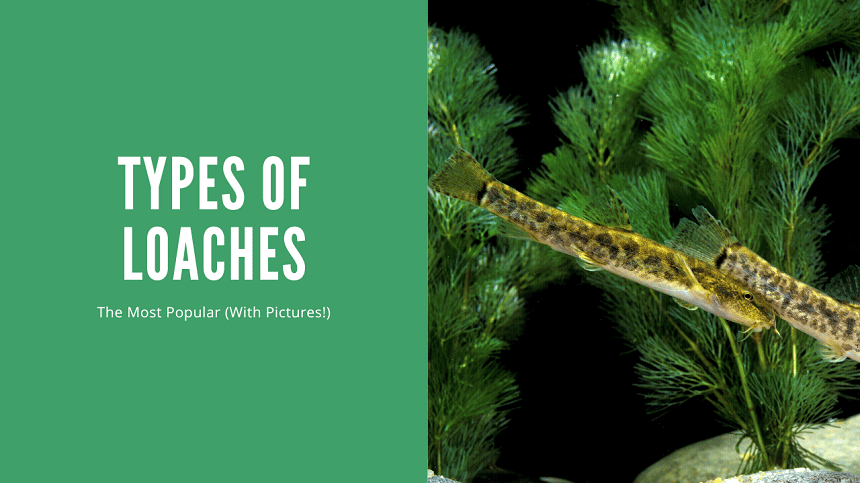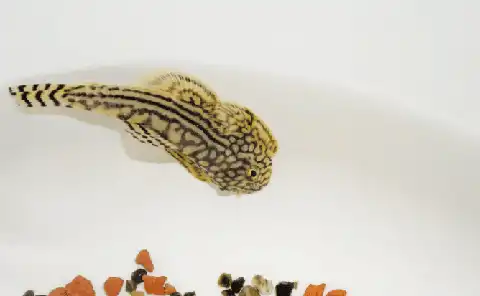Thank you for visiting! By the way… any links on this page that lead to products on Amazon and other stores/partners are affiliate links Aquarium Store Depot earns a commission if you make a purchase.
Have you thought about adding loaches to your freshwater aquarium? These amazing Asian fish are so versatile that there’s a species for just about any community setup. Loaches can add high activity levels to your tank, or just chill out on the bottom. One thing they all have in common is really interesting looks, however.
There are so many awesome species available in the hobby today that choosing the best one for your tank can be tricky, and that’s why I’ve written this article.
Read on to learn about 12 types of loaches that you can keep. You’ll also learn the basics of how to set up their aquarium and provide them with great care.
Let’s get started!
Key Takeaways
- Loach fish are bottom dweller fish that enjoy being in groups
- Many loach species do a stellar job at removing pest snails
- Larger Loaches like the Clown Loach can do well in semi-aggressive setups
- Small loaches do great in community tank setups
What Is A Loach?
Loaches are freshwater fish from Asia and Europe, although most species in the aquarium hobby are from Southeast Asia. Their body shape varies from shark-like to eel-like, or even flat like a stingray!
Most loaches in the aquarium hobby are medium-sized fish that grow to a few inches, although there is a loach for pretty much every tank size. Rosy loaches, for example, are a great nano species, while the clown loach can reach a foot in length and needs a really large tank to thrive.
Most loaches are bottom feeders that forage for insect larvae and snails, although many species also feed on plant material. They are generally peaceful, although these fish can be very boisterous, so they do not make the best tank mates for shy fish.
Best 12 Types Of Loaches For Freshwater Aquariums
Now that you have the general background to this popular group of aquarium fish, it’s time to learn about the best 12 loach fish species that you can keep in your tank. I’ll be listing the following important information for each species:
- Scientific Name
- Other Names
- Adult Size
- Care Level
- Temperament
- Minimum Tank Size
- pH
- Water Temperature
- Unique Traits
I have included a video from our YouTube channel below for those of you who are visual learners. I go over more detail in the blog post below. If you like our content, be sure to subscribe as we release new videos every week!
Let’s get started!
1. Yoyo Loach

- Scientific Name: Botia almorhae
- Other Names: Pakistani loach
- Adult Size: 5-6 inches
- Care Level: Moderate
- Temperament: Peaceful
- Minimum Tank Size: 55 gallons
- pH: 5.5-7.5
- Water Temperature: 66-81°F
- Unique Traits: Awesome Yo-Yo markings when young
Yoyo loaches get their name from the interesting markings on the sides of young fish that often literally spell out the word ‘yoyo’. Yoyo loaches scavenge on the bottom of the aquarium and are highly active and bold fish. They are social too, so be sure to pick up a group of 6 or more.
2. Zebra Loach

- Scientific Name: Botia striata
- Other Names: Candy stripe loach, zebra botia, crossbanded loach
- Adult Size: 3.5 inches
- Care Level: Easy
- Temperament: Peaceful
- Minimum Tank Size: 30 gallons
- pH: 6-7.5
- Water Temperature: 70-78°F
- Unique Traits: Beautiful zebra stripes
If you ask me, the zebra loach is one of the best-looking bottom feeders in the aquarium hobby. The stripy pattern of the zebra loach has earned them the alternative name of candy stripe loach.
These active swimming fish love to hang out with their own kind, so pick up a group of 5 or more.
3. Dwarf Chain Loach
- Scientific Name: Ambastaia sidthimunki
- Other Names: dwarf loach, ladderback loach, chain loach
- Adult Size: 2 inches
- Care Level: Easy
- Temperament: Peaceful
- Minimum Tank Size: 30 gallons
- pH: 5.5-7.5
- Water Temperature: 68-86°F
- Unique Traits: Excellent for pest snail control
The dwarf chain loach or ‘sid’ is a highly sought-after loach species. These fish stay small at 2 inches or so, but are very active in their school, so make sure they have plenty of swimming space.
Dwarf chain loaches are bottom feeders but they can be bold and have no problem moving higher in the water column in their school. They need to be kept in a decent size group, however, so make sure you budget for 6 or more.
4. Kuhli Loach
Kuhli Loaches are hardy bottom-dwelling fish. Nocturnal in nature. Gets along with many fish and tolerate of coldwater environments
- Scientific Name: Pangio kuhlii/semicincta
- Other Names: Coolie loach, leopard loach
- Adult Size: 3-4 inches
- Care Level: Easy
- Temperament: Peaceful
- Minimum Tank Size: 15 gallons
- pH: 5.5-7
- Water Temperature: 70-79°F
- Unique Traits: Eel-shape body
The kuhli loach is one of my favorite clean-up crew fish for freshwater aquariums. These eel-like loach fish can be really goofy as they dart around, although they tend to be a more nocturnal species.
Kuhli loaches have tiny eyes but they can be quick to find a tasty sinking pellet or wafer on the bottom of the fish tank. The regular kuhli loach is probably the best-looking species, but there are other awesome species like the black and the silver kuhli loach that you can choose from.
5. Dojo Loach

- Scientific Name: Misgurnus anguillicaudatus
- Other Names: Weather loach, pond loach
- Adult Size: 8-11 inches
- Care Level: Easy
- Temperament: Peaceful
- Minimum Tank Size: 50 gallons
- pH: 6-8
- Water Temperature: 64-74°F
- Unique Traits: Coldwater hardy
The dojo loach is a large loach species that makes an awesome tank mate for goldfish. These unique eel-shaped loaches grow relatively large, and they are available in interesting golden and albino varieties. They are also known as pond loaches but you should not keep them outdoors in case they escape into local waterways.
6. Hillstream Loach
A unique-looking loach fish that prefer fast-flowing water. Not picky eaters and readily accept most foods
- Scientific Name: Sewellia lineolata
- Other Names: Reticulated hillstream loach
- Adult Size: 2-2.5 inches
- Care Level: Moderate
- Temperament: Peaceful
- Minimum Tank Size: 30 gallons
- pH: 6.5-7.5
- Water Temperature: 68-75°F
- Unique Traits: Stingray body shape
The reticulated hillstream loach is one of the strangest looking fish in the hobby, which makes them a really interesting choice for your aquarium! Their natural habitat is flowing streams, so they prefer good water flow and oxygenation in their tank. You can easily set this up with a small power head and an airstone.
Hillstream loaches should be fed prepared and live frozen/foods, although this peaceful species will also graze on algae and biofilm in your aquarium. Like other loaches, these fish are social so it is best to keep them in a small group.
7. Golden Zebra Loach

- Scientific Name: Botia histrionica
- Other Names: Silver striped loach
- Adult Size: 5 inches
- Care Level: Easy
- Temperament: Peaceful
- Minimum Tank Size: 55 gallons
- pH: 6.5-7.2
- Water Temperature: 77-82°F
- Unique Traits: Placid and curious personality
The golden zebra loach is quite similar to other loach species like the polka dot and the yoyo loach. It is a peaceful fish that is easy to feed and fits in great with other species in a community aquarium.
8. Rosy Loach
- Scientific Name: Petruichthys sp. ‘rosy’
- Other Names: None
- Adult Size: 1 inch
- Care Level: Easy
- Temperament: Peaceful
- Minimum Tank Size: 15 gallons
- pH: 6.5-8
- Water Temperature: 68-78°F
- Unique Traits: Great nano loach for a smaller tank
If you’re looking to add a few loaches to your collection but you don’t have a lot of room, the rosy loach could be a perfect choice (video source).
The rosy loach is a true nano species but they are very active and need to be kept in a group of 8 or more to really shine. These small fish get along great with other nano fish in planted aquariums and should get along well with adult shrimp.
9. Clown Loach
One of the most popular loach fish in the hobby. Does great with Tiger barbs. Grows over 6" in length and requires a larger aquarium to house
- Scientific Name: Chromobotia macracanthus
- Other Names: Tiger botia
- Adult Size: 8-12 inches
- Care Level: Moderate
- Temperament: Peaceful
- Minimum Tank Size: 100 gallons
- pH: 5-7
- Water Temperature: 75-86°F
- Unique Traits: Bright colors
Clown loaches are one of the most colorful loach species in the hobby. They have great personalities and are usually very active and outgoing.
Many fishkeepers accidentally add clown loaches to their aquariums without realizing just how big they can grow, however. These large loaches prefer to be kept in groups, so you will need a tank of over 100 gallons if you plan on keeping these beautiful fish.
10. Polka Dot Loach
- Scientific Name: Botia kubotai
- Other Names: Angelicus loach
- Adult Size: 5-6 inches
- Care Level: Moderate
- Temperament: Peaceful
- Minimum Tank Size: 55 gallons
- pH: 6-7.5
- Water Temperature: 72-82°F
- Unique Traits: Vibrant outgoing personality
The polka dot loach is also known as the Angelicus loach. These fish are similar to yoyo loaches but more peaceful and even better looking!
These social fish do best when kept in groups of 5 or more. They will feel right at home in a tank with a sandy bottom and plenty of caves and other hiding places.
11. Horsehead Loach
- Scientific Name: Acantopsis dialuzona
- Other Names: Horseface loach, banana fish
- Adult Size: 8 inches
- Care Level: Moderate
- Temperament: Peaceful
- Minimum Tank Size: 75 gallons
- pH: 6-8
- Water Temperature: 61-75°F
- Unique Traits: long horse-like face
The horsehead loach (video source) is a funny-looking bottom dweller that adds great interest to cool water aquariums. These elongated loaches do best in a tank with good water flow and a sandy substrate.
The horsehead loach is a great choice for larger unheated aquariums and has the added bonus of being great for controlling pest snails. These fish should be kept in groups of 6 or more.
12. Panda Loach
- Scientific Name: Yaoshania pachychilus
- Other Names: None
- Adult Size: 2.25 inches
- Care Level: Moderate
- Temperament: Peaceful
- Minimum Tank Size: 20 gallons
- pH: 6.5-7.5
- Water Temperature: 68-75°F
- Unique Traits: Juveniles are pure black and white
The panda loach (video source) is still pretty new in the hobby, but already a popular aquarium fish. These small loaches come from mountain streams in their native habitat so they prefer cool water with good flow and oxygenation.
Keep a group of 4 or more of these small fish in a hill stream biotope for a really interesting aquarium!
Loach Tank Setup
Keeping happy and healthy loaches starts with setting up a great fish tank that they can call home. Read on to learn the basics of loach tank setup.
Tank Size
The tank size you will need depends on the species of loach you keep. The smallest species like rosy loaches can be kept in tanks as small as 15 gallons, although these active fish would prefer more room.
Large species like clown loaches grow to 10 inches or more, live in schools and are very active. These fish need large aquariums of over 100 gallons. All loaches are strong jumpers, so a secure lid is a must!
Filtration
Excellent filtration is recommended for all loach species. Panda, horsehead, and hillstream loaches live in freshwater streams as their natural habitat and require good flow and increased oxygen levels.
A filter that can process all the water in your fish tank 10 times or more every hour is recommended for these fish, and an airstone should be used in warmer water. A canister filter is going to be the best option for these fish.
Our Subscriber's Choice
Top name brand, Italian made, and updated design. The next gen Fluval Canisters are a best buy!
Temperature And Other Important Parameters
The different loach species prefer different water temperatures. Panda loaches and dojo loaches, for example, are cool water species from temperate zones that can be kept in unheated aquariums that do not exceed the mid-70s Fahrenheit.
Tropical species will require a heater designed for your tank size and a thermometer to help you monitor the water temperature.
Substrate
Fish from the loach family have tiny scales that do not protect their skin well from abrasion and scratches. Their sensitive barbels can also be damaged by sharp substrates. Sand or smooth gravel and stones are recommended.
Live Plants And Decorations
Loaches thrive in planted aquariums. Some species do feed on soft aquarium plants from time to time, however.
Provide plenty of hiding spaces in the form of rocks, driftwood, and cave ornaments. Loaches love to squeeze into tight spaces and can damage their skin if there are any sharp edges.
How To Care For Your Loaches
Continue reading to learn the basics of loach care.
Testing & Water Quality
Loaches require excellent water quality, so weekly water changes are recommended in most cases.
Most loach species are happy in a relatively wide variety of water parameters but it is essential to test your water before adding any fish to your aquarium.
Test for hardness and pH in your water supply, and wait for your ammonia and nitrite levels to drop to zero so that you know your tank has cycled.
You’ll also need to test your water regularly to monitor your water quality. Aim to keep your nitrate levels to 20 ppm or lower.
Aquarium Maintenance
Keeping your aquarium clean and healthy requires regular maintenance. Set aside an hour every week or two to perform a partial water change, vacuum your substrate, and clean your glass.
Remember to use a water conditioner if you’re using tap water in your aquarium, and only rinse your filtration media in old tank water to keep your beneficial bacteria colonies healthy.
Feeding Your Loaches
Most loaches are easy to feed. These fish are bottom feeders so choose a high-quality sinking tablet, pellet, or wafer as their regular diet.
Avoid overfeeding your loaches as this can cause poor water quality and ammonia spikes. Remove food that is not finished after 2 minutes or so.
Supplement this with blanched vegetables and live or frozen foods like brine shrimp and blood worms to improve their condition.
Hill stream loaches need a healthy supply of algae and biofilm to feed on so they should be kept in mature aquariums and be supplemented with algae wafers when necessary.
Loach Tankmates
Most loaches are peaceful fish that can be kept in a well-planned community aquarium. They can be intimidating to other fish because of their boisterous personalities, however.
They are social fish that live in schools or shoals in nature, so it is important to keep them in groups of the same species. It is possible to keep a single loach, but you should not keep just 2 or 3 because they may fight.
Choose tank mates that enjoy the same water parameters as the loach species you keep. You should avoid species with long fins and any species that could be aggressive towards your loaches.
Loaches love to eat snails, so avoid keeping loaches if you enjoy seeing snails in your aquarium. Most species will also feed on shrimps so these fish are generally not safe with small inverts.
Breeding Loaches
Loaches are very difficult to breed in the home aquarium. Unfortunately, you probably won’t be able to breed your own loaches, although some aquarists have had success with kuhli loaches and some other species.
Loach Health Problems
Loaches are generally hardy and problem-free fish to keep. They can be affected by common health problems if kept in poor water quality or otherwise stressful conditions.
Look out for the following common illnesses in your loaches:
- Ich/white spot disease
- Swim bladder disease
- Columnaris
Loaches have relatively sensitive skin and barbels(whiskers) that can be damaged on sharp ornaments and substrates. Sandy substrates and a smooth hardscape are recommended to avoid injuries.
The best way to avoid illness in your fish is to keep them in a well-maintained, clean aquarium. I recommend quarantining new fish for 3 weeks or so in a hospital tank before adding them to a community aquarium.
Where To Buy Loaches
Most local fish stores will sell a selection of common loach species like clown loaches, kuhli loaches, and zebra loaches. The widest range of species can be found online, however, especially if you’re looking for rare species like panda loaches.
FAQs
What is the most peaceful loach?
Loaches are generally very peaceful fish, but they can be very active and boisterous. The awesome zebra loach is one of the most peaceful species in the hobby.
What kind of fish is a loach?
Loaches are bottom-dwelling freshwater fish from the Cobitidae family. They can be cold water, sub-tropical, or tropical fish and there are many popular species in the fish-keeping hobby.
Are loaches friendly fish?
Most loach species are very social and friendly fish. The clown loach is a colorful fish from the loach family with a great personality. These friendly fish can even learn to recognize their owner.
Do loaches clean tanks?
Loaches can be great clean-up crew fish because they love to eat uneaten food from the bottom of the tank. Hillstream loaches can even help to keep your aquarium free of algae.
How big does a loach fish get?
The different species of loach grow to different sizes. Some large species like clown loach and the weather loach can reach nearly a foot in length. Smaller species of loach like the dwarf chain loach, hillstream loach, and rosy loach grow to just 2 inches or less.
Final Thoughts
Loaches are awesome odd-ball fish for freshwater aquariums. These bottom-dwelling fish vary greatly in size, shape, and color, so there’s a perfect loach for just about any aquarium!
Do you love loaches? Tell us about your favorite species in the comments below!
- About the Author
- Latest Posts
I’m thrilled that you found Aquarium Store Depot! Here you’ll find information on fish, aquariums, and all things aquatics related. I’m a hobbyist (being doing this since I was 11) and here to help other hobbyists thrive with their aquariums! I adhere to a high quality Editorial Process and Review products with real life field usage and practical analysis.









